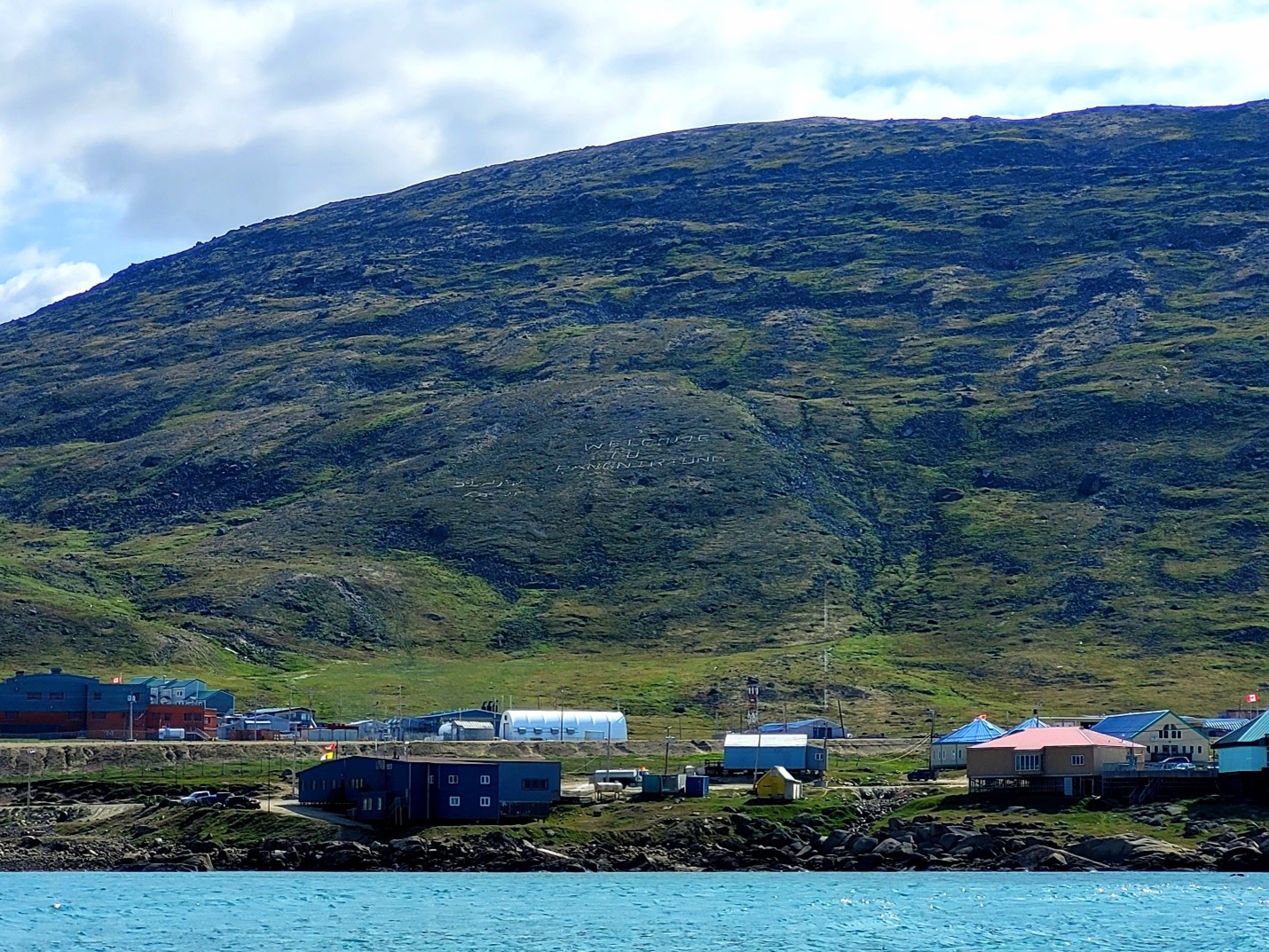Every year individual Nunavut communities apply for a permit to hunt a single bowhead whale. This is an intensive and expensive process, which can begin more than a year in advance. Communities invest considerable human and material resources into hunts, and their success is critical for communities as a valuable source of food and crafting materials. Hunts are important for Inuit cultural identity and represent important opportunities to pass on skills and knowledge to the next generation. These hunts also represent an opportunity to collect important samples that provide context on bowhead whale health and conservation, both on the individual and population levels. Collecting research samples is challenging, both because of the technical nature of the sampling process, as well as the inherent complexity of the butchering process. Having veterinary pathologists present during both the hunt and butchering provides a valuable opportunity to take research samples, as well as train members of the community on how to take a process those samples during future hunts.

Funding for Dr. Pierre-Yves Daoust and Dr. Laura Bourque to attend the bowhead whale hunt out of Pangnirtung (NU) was provided by the Department of Fisheries and Oceans Canada. Our mandate was to observe the hunt, obtain research samples, and to provide sample training to community members for future hunts. We arrived in Pangnirtung on July 18th and spent the next few days preparing for the hunt which involved meeting with various members of the Hunters and Trappers Organization to work out our sampling logistics, as well as purchasing camping supplies from local businesses. Qikiqtan Island (65°42’17”N 65°48’29”W) was chosen as base camp, which has been the traditional base camp location of past Pangnirtung bowhead hunts, and represents an important cultural heritage site as a historical whaling station. We traveled with the hunt team and their families to Qikiqtan via boat on July 22nd and spent the next few days setting up camp and waiting for weather conditions to be optimal for the hunt. The ideal weather conditions for the hunt require a sunny day with very little wind which minimizes the surf and improves visibility for identifying whales.

On the morning of July 26th, we headed out into the Cumberland sound, and very soon the hunt team identified an adult whale. The Pangnirtung hunters were extremely competent at their jobs, which required an amazing degree of coordination between numerous boats, as well as skill with grenades, harpoons, and lances. Once the whale was dispatched, it was towed back to Qikiqtan base camp where the butchering process commenced. The butchering was attended by a large number of community members who all pitched in to harvest parts of the whale that are important as both nutritional and cultural resources for the community. We were able to acquire research samples as well as train a member of the community on how to take a wide variety of research samples that could be used for a variety of testing modalities including histopathology, PCR, and toxicology. Once sampling was completed, we assisted with the rest of the butchering. Butchering is an incredibly labor intensive process and took approximately 2 and a half days with at times more than 20 people working on the carcass.
This experience brought home how important bowhead whales are to Inuit communities, and also the need to preserve not only the species itself but the cultural heritage that surrounds them. I hope we will be able to continue to work with Nunavut communities on sampling and health issues related to both bowhead whales and other marine mammals in the future.
By: Laura Bourque

